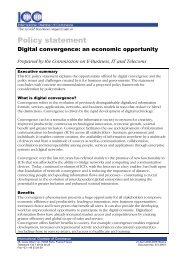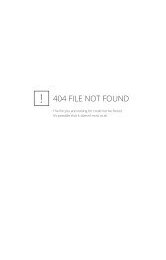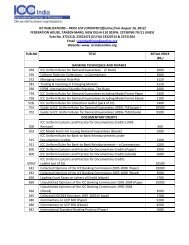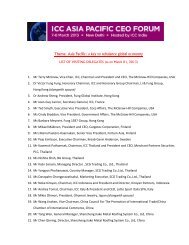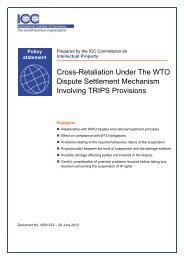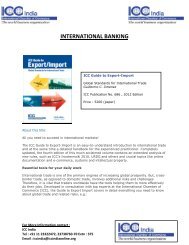2013 - ICC India
2013 - ICC India
2013 - ICC India
- No tags were found...
You also want an ePaper? Increase the reach of your titles
YUMPU automatically turns print PDFs into web optimized ePapers that Google loves.
46<strong>ICC</strong> BANKING COMMISSION | <strong>2013</strong> GLOBAL RISKS TRADE FINANCE | APPENDIX BThere has long been some debate in credit risk management about whetheror not portfolios of customers can be less risky than the sovereign of thecountry in which they operate. Those that feel that a sovereign in a countryis, in practice, less risky than any customer in it point to:■■The ability of a government to print money to meet its commitments(assuming they are denominated in the local currency);■■The ability of a government to increase taxes to meet its commitments;■■■■The ability of a government to expropriate assets if it so desires (andhence to meet obligations);The fact that if a sovereign defaults, then there are typically seriousrepercussions for individuals and companies in that country.If the sovereign is considered less risky than individuals or companies,then it naturally follows that the RWA% for a corporate and bank exposureshould be higher than for an exposure to the sovereign, i.e. the sovereignRWA% should form a “floor” for corporates and banks etc. The BaselCommittee concluded in writing the Basel II rules that for standardisedexposures there should be such a “sovereign floor” 71 .■■■■Given that trade finance products are often used in countries where thesovereign is unrated, this effectively meant many such exposures couldnot have a risk weight of less than 100%.However, in October 2011, recognising the importance of trade financeto low income countries, “to make access to trade finance instrumentseasier and less expensive for low income countries, the Committeeagreed to waive the sovereign floor for short-term self-liquidating lettersof credit” 72 for claims on the issuing bank.Although there is no explicit sovereign floor required under the IRBapproaches (as there is under the standardised approaches), many banks’internal rating systems would, in practice, apply a sovereign floor to thecustomer PD for most corporate or bank counterparties for the reasonsoutlined above 73 .Exposure at DefaultThe EAD for on balance sheet exposure, not subject to netting agreements,cannot be lower than the current balance (even if some exposure is expectedto be repaid prior to default 74 ) whether measured under standardised,foundation IRB, or advanced IRB.Under the standardised approach, as under Basel I, off balance sheetexposures are converted to exposure equivalents based on a series ofCCFs. These CCFs are intended to reflect the likelihood of an off balancesheet position to become on balance sheet. The CCF for short-term selfliquidatingtrade L/Cs were reviewed by the Basel committee during 2011 75 ,however it was concluded that the CCF should remain at 20% 76 .Banks adopting a foundation IRB approach use broadly the same set ofregulatory CCFs as under the standardised approach 77 . Therefore there willbe little difference between the CCFs on trade finance products betweenfirms using a standardised approach and a foundation IRB approach.



